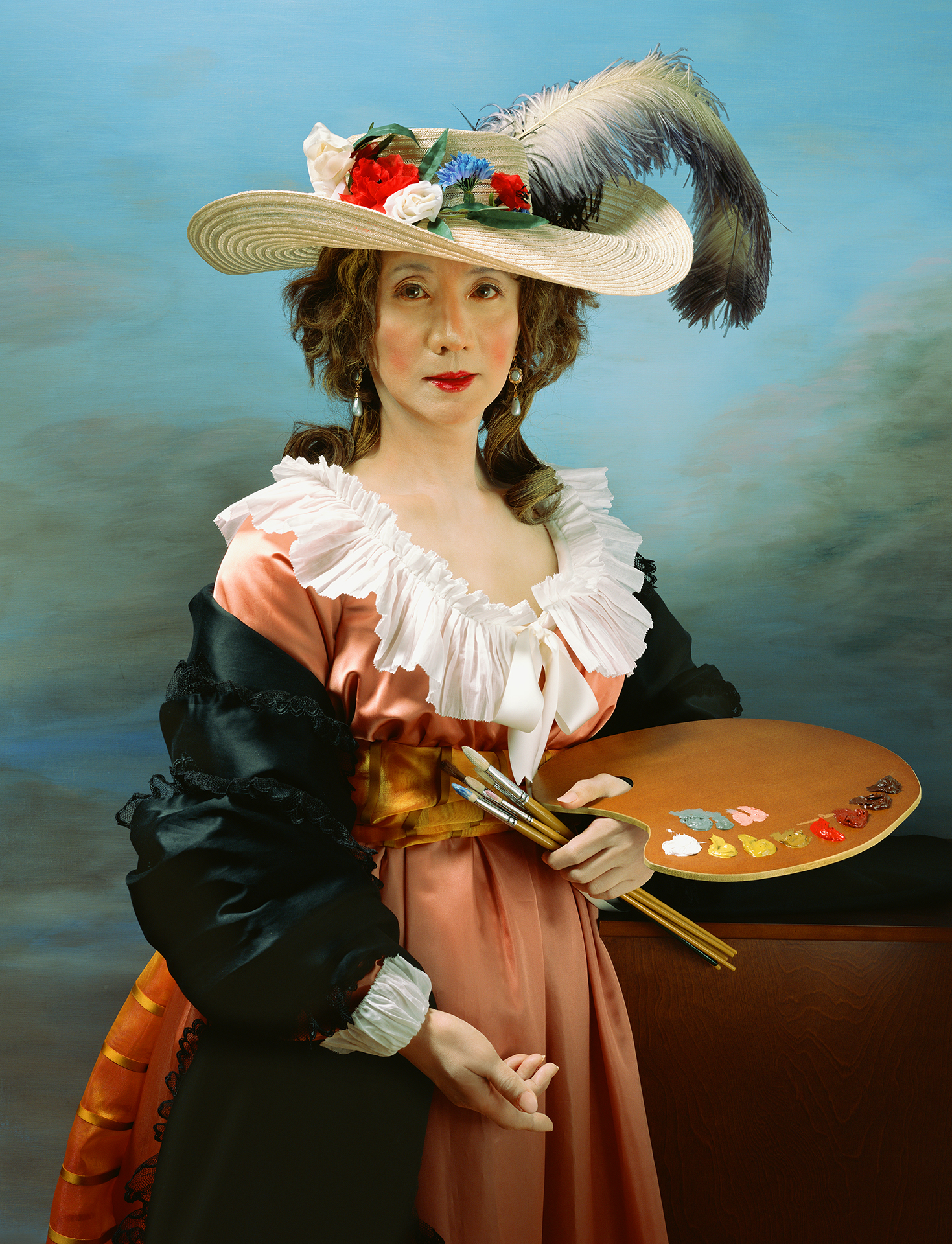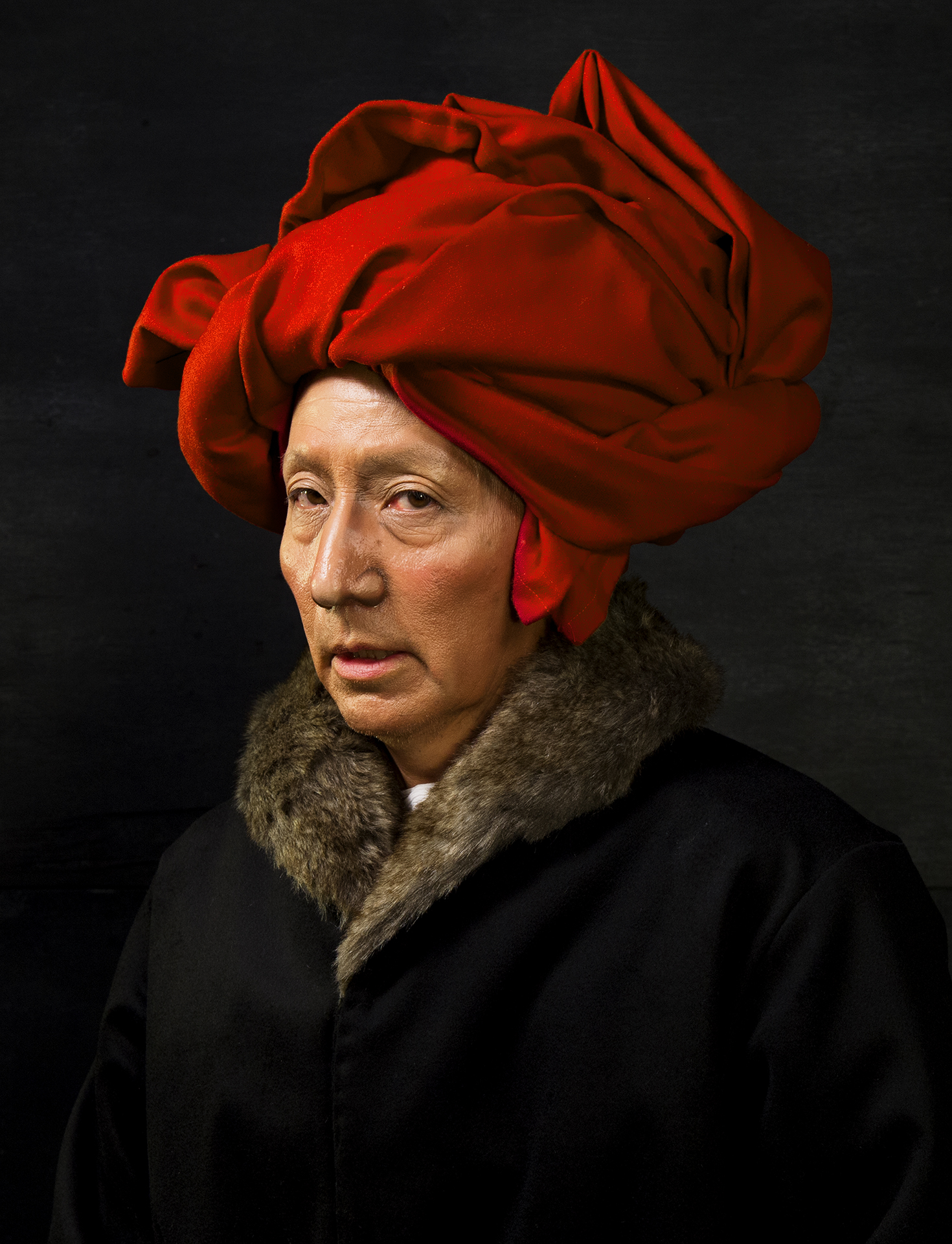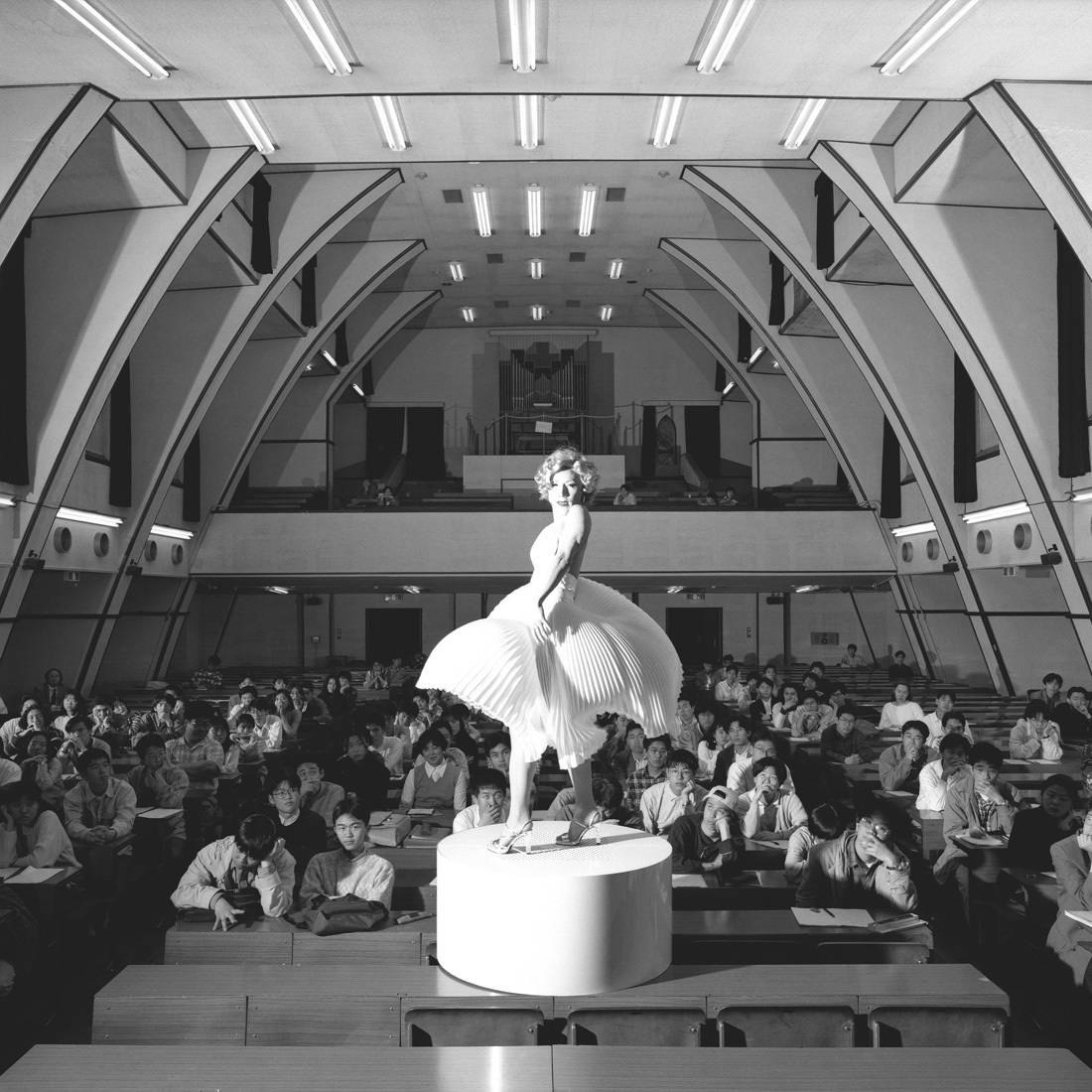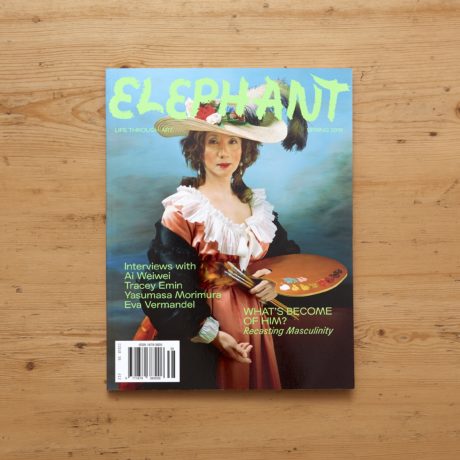
You have described yourself as “a daughter of art history” and have inhabited so many different personalities in the investigation of “the self”. Why did you begin to recreate famous images from art history in the first place? And do you experience something different when embodying male and female figures?
What I would like to do is to rewrite art history from my point of view. It is generally considered that the art history in textbooks is the only correct narrative. However, it is not singular, and a number of different versions can and should exist multifariously. With this standpoint, using my imagination, I am trying to present my art history based on the interpretation that can satisfy myself.
Regarding “a daughter of art history”; I was born and raised in Asia (Japan), a non-Western world. To me, the Western world and its art history feels like a “father”, who dominates his family, and I feel—although I am male—opposed to that. As “a daughter of art history,” I get pregnant and give birth to artworks as my own children, holding both love and hate towards the father. It is needless to say that this notion resulted in my Daughter of Art History series that continues to this day.

Within your practice you have long challenged what would be considered the binaries of gender, both within the context of reframing art historical images and embodying the image of glamorous actresses. Has this always been an important concern for you?
Is gender binary? Rather gender (in fact not only gender, but probably all phenomenon) should be considered as a condition in gradient. My Actress series is not premising the binary categorization of masculinity and femininity. If you ask me, the tendencies of so-called masculinity and femininity are not unlike a nest of Chinese boxes. “Femininity” is in “masculinity”, and “masculinity” is in “femininity”. It is easy to understand gender if you put it into binaries, but in reality gender should be more multilayered, mixed and vaguely bordered.
“When I go out for a photoshoot in these disguises I am often surrounded by onlookers”
When you first embarked on the Actress works with your impersonation of Marilyn Monroe for Panja magazine, did you already have a primary objective?
At that time (around 1995) I did not have any specific purpose. In some vague form I, as a Japanese male, had a sort of conviction to attempt to transform into the American actress Marilyn Monroe in a way that was not going to be a mere impersonation, but hold more themes, to be further discussed. It took quite a while to embody and clarify that, though.

Kaori Chino refers to the experience of viewing your Actress images as “the viewer’s one-sided gaze is being repelled and hurled back to the viewer.” It’s an extremely visceral description; do you like it?
It was indeed a very strange feeling when I tried the Actress series. At first, I understood that actresses existed to expose their faces and bodies and to be constantly watched by spectators. When I go out for a photoshoot in these disguises I am often surrounded by onlookers. However, I have gradually felt that I have transformed as an actress, from the passive existence of “being seen” to the existence of “showing” myself, and then finally to the state of observing them [the spectators] back. Once I was able to “get back at them” I felt that I truly became an actress. Ms. Chino was probably describing this process in her own words.

You have previously explained that for your first Van Gogh portrait you “used the medium of photography to make a painting” and more recently you have been working in film and multimedia, with works like Egó Sympósion and Nippon Cha Cha Cha!, which were recently shown at the Japan Society in New York. Do you view these different mediums as part of a cohesive whole? Or do photography and painting still dominate?
It would be more correct to say that I am more interested in art history than in paintings. Of course, I am also concerned with the history of human beings, cultures, politics, economics, nature and space. However, I consider it my mission as an artist to examine all my interests in the field of art.
My most important job is to question the identity of “self” in art history. Almost all my works have questioned “who I am” in a way. The techniques of expression vary, sometimes photography, moving images and films, and other times literature and performance. However, this theme is always consistent and singular.

Your exhibition at the Japan Society surveyed three decades of practice. How does it feel reflecting back on this body of work?
My exhibition focused on my past thirty-something years of work, but it was by no means meant to reflect what I have done in the past. The truth is, it is challenging for me to see how I can recapture what I have done, from the viewpoint of my current self. Right now I am hugely ambitious. I want to move towards new actions of expression that have fresh feeling. I want to step into the next stage by restructuring “myself”. In fact, I want to deconstruct and reconstruct myself.
This feature originally appeared in issue 38
BUY ISSUE 38




